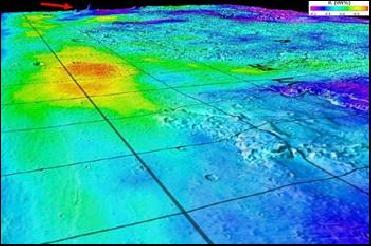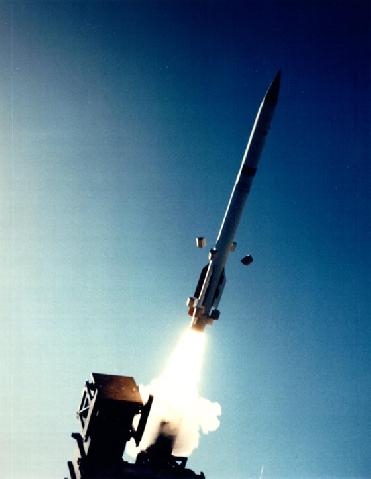
This 3D map superimposes gamma-ray data from Mars Odyssey's GRS onto topographic data from the laser altimeter onboard the Mars Global Surveyor. University of Arizona photo
WASHINGTON, DC (BNS): The Gamma Ray Spectrometer (GRS) aboard NASA's Mars Odyssey has helped scientists unveil fresh evidence that about a third of ancient Mars was covered with oceans.
University of Arizona (UA) planetary geologist James M Dohm, who led the international investigation revealed this while comparing GRS data on potassium, thorium and iron above and below a shoreline believed to mark an ancient ocean that covered a third of Mars' surface, and an inner shoreline believed to mark a younger, smaller ocean.
"Our investigation posed the question, Might we see a greater concentration of these elements within the ancient shorelines because water and rock containing the elements moved from the highlands to the lowlands, where they eventually pondered as large water bodies," he said.
Led by William Boynton of UA's Lunar and Planetary Laboratory, Mars Odyssey's GRS had a unique ability to detect elements buried as much as 1/3 meter, or 13 inches, below the surface by the gamma rays they emitted. That capability led to GRS' dramatic 2002 discovery of water-ice near the surface throughout much of high-latitude Mars.
Dohm said results from Odyssey and other spacecraft suggest that past watery conditions might have leached, transported and concentrated such elements as potassium, thorium and iron. "The regions below and above the two shoreline boundaries are like cookie cutouts that can be compared to the regions above the boundaries, as well as the total region�.
GRS adds key information to the long-standing oceans-on-Mars controversy. "But the debate is likely to continue well into the future, perhaps even when scientists can finally walk the Martian surface with instruments in hand, with a network of smarter space-borne, air-borne and ground-based robotic systems in their midst," he said.
The researchers said the younger, inner shoreline is evidence that an ocean about 10 times the size of the Mediterranean Sea, or about the size of North America, existed on the northern plains of Mars a few billion years ago. "The larger, more ancient shoreline that covered a third of Mars held an ocean about 20 times the size of the Mediterranean."
The potassium-thorium-iron enriched areas occur below the older and younger paleo-ocean boundaries with respect to the entire region. The scientists used data from Mars Global Surveyor's laser altimeter for topographic maps of the regions in their study.
The team�s discovery will be published in the article, "GRS Evidence and the Possibility of Paleo-oceans on Mars," in the special edition of Planetary and Space Science, which stems from a June 2007 workshop on Mars and its Earth analogs held in Trento, Italy. UA Regents' Professor Victor Baker and Boynton, and other scientists from the United States, Italy, Spain, South Korea and Canada are co-authors of the article.
 Previous Article
Previous Article Next Article
Next Article













The Indian Air Force, in its flight trials evaluation report submitted before the Defence Ministry l..
view articleAn insight into the Medium Multi-Role Combat Aircraft competition...
view articleSky enthusiasts can now spot the International Space Station (ISS) commanded by Indian-American astr..
view article